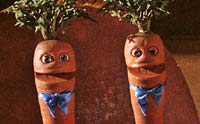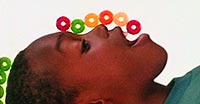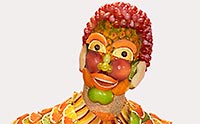Serendipitous Still Photographer

Feature film productions traditionally hire a "Unit Still Photographer" whose job it is to shoot images for use in the promotion of a movie. Unintentionally and in a very different manner from the norm, I became the primary still photographer for The Nightmare Before Christmas. I was hired to be a character animator for the project; however, I just happened to be an avid 3-D stereo photographer who loved to capture amazing stop-motion setups in 3-D for my private collection. At the point when the movie was nearing completion, Disney publicity decided that they needed some compelling photos to promote the film and, incredibly, no one had been officially assigned to shoot the stills! Their only hope was to make an appeal to the crew for their personal pictures of the production. Surprisingly, they determined my stills were exactly what they needed. The publicity department had no interest in the 3-D aspect; however, the photos worked equally well in standard 2-D format. We reached an agreement and my pictures were used in the big pre-release promotional push of the film in 1993. I have to admit that it was highly gratifying to see so many of my photos published in several major magazines and newspapers as part of The Nightmare Before Christmas marketing strategy.
Creating still images that were deemed worthy of representing a major animated movie required care and planning. It took a matter of careful timing in order to obtain access to the stages without interfering with the production. For the setups I was involved in animating, there was no problem. I knew when my fellow animators would likely finish their shots, so I took advantage of my windows of opportunity in the mornings before the shots were to be reviewed for approval by the director, Henry Selick. I generally arrived at work early enough to have time to shoot my photos before each set would be taken down to be replaced by a new one. Usually, I left the puppets positioned as they had been in the movie; however, I also intentionally posed a number of scenarios to create a unique depiction.
Prior to Nightmare, I had been photographing miniatures for many years, and I had an established personal method. My camera was a Nikon SLR and my film of choice was Kodachrome 40, Kodak's finest-grained slide film, balanced for tungsten light. I shot at f/22 to get the maximum depth of field possible. Side effects of using the slow Kodachrome 40 and f/22 were the resulting long exposures, but those were not a problem because I used a tripod. My procedures ensured very crisp, sharp images on full-frame slide film that gave more than twice the resolution of motion picture film frames. The Kodachrome also imparted a distinctive look, quite different from the film stock that was used for the movie. In regard to shooting in 3-D, please refer to my article 3-D Anaglyph Technique.
Here are a few samples of the over 64 scenes that I captured, all presented in 2-D. These photographs epitomize the incredible artistry of the set builders, model makers, sculptors, puppet fabricators, designers, lighters, and animators who all collaborated brilliantly to create The Nightmare Before Christmas!











The Nightmare Before Christmas © 1993 Walt Disney Company







































